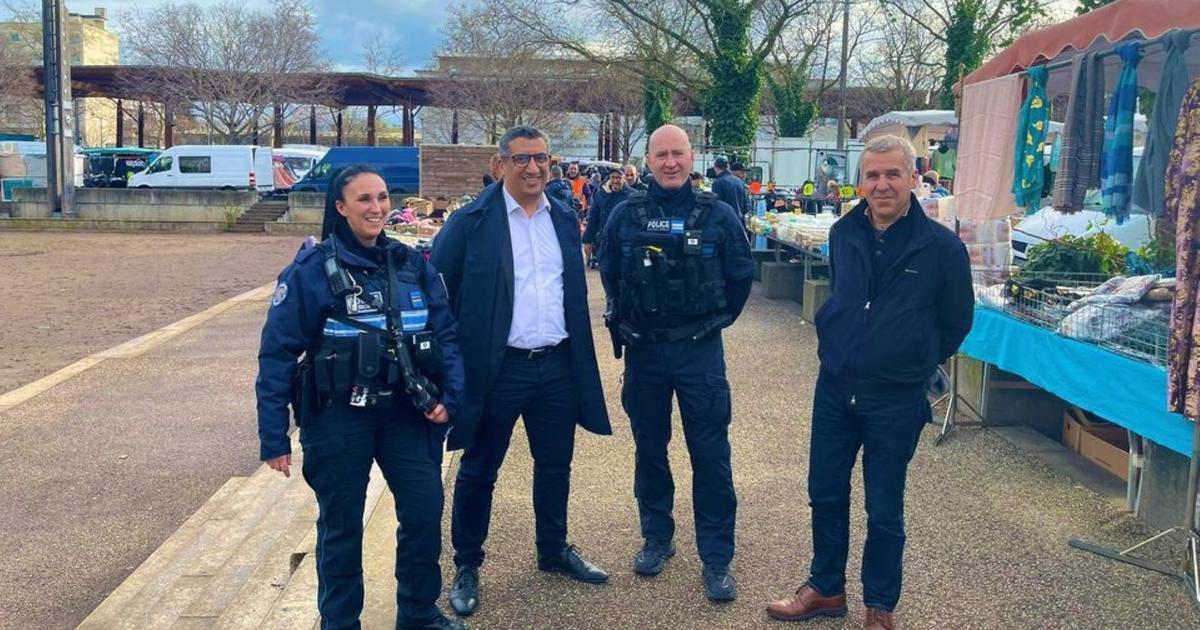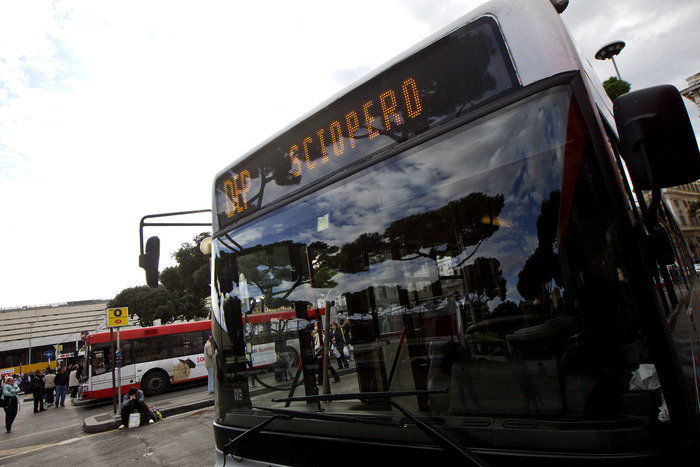He is 28 years old, but it is as if that time has passed over him twice.
Her face is drawn and her back is hunched.
Shadi (she asks not to give her real name) is one of around 2,000 street vendors who walk the Tehran metro hawking their wares every day, according to figures cited by Iranian media.
In the suburban area of this megacity of 16 million inhabitants, women like this divorced mother find a precarious livelihood thanks to this illegal activity, the only one they can often carry out in a labor market in which many jobs are closed to them and where women leads to that submerged economy that takes place in the bowels of the Iranian capital.
Shadi's story is that of many other of those women who drag large suitcases and bags through the corridors of the subway and then display their merchandise - clothes, hair decorations, hair dyes, makeup, even kitchen utensils - on hangers hooked from the bars of the carriages, especially those reserved for women, at the head and tail of each train, where they feel "safer", explains the young woman.
His profile abounds among these sellers.
She is a single-parent female head of household, one of at least six million Iranians in that situation, out of a total population of about 84 million, according to unofficial statistics cited by Iran's Vice President for Women's Affairs, Ensiyeh Khazali, in 2022. In the case of Shadi and many of her companions, they are also women subjected to the stigma that divorce in Iran continues to entail, regardless of its cause.
More information
Chess player Sara Khadem, exiled in Spain, will be arrested if she returns to Iran
“My husband was addicted to drugs, he got into everything and didn't bring home any money,” explains the saleswoman.
“To get divorced, I had to prove that he was a drug addict and hire a lawyer that cost me dearly.
Now I support my two daughters and my mother, who live outside of Tehran.
I would like to bring my girls to live with me, but it is impossible.
I work outside all day and I can't take care of them”, she affirms.
Shadi got married “at 17 or 18 years old” and she only has what she defines as “a high school diploma”.
Many of these workers have a low level of education, but even highly educated Iranians struggle to enter a job market that excludes them.
50% of the country's university graduates are women, but female participation in the active population barely reached 18% in 2019. The collapse of economic activity due to the covid caused that percentage to fall to 14% in 2020, according to data from Human Rights Watch (HRW).
Raffaele Mauriello, an Iranian scientist and professor at Allameh Tabataba'i University, adds, in a conversation with this newspaper in Tehran, that international sanctions for Iran's nuclear program have also caused "two million Iranian women to lose their jobs in the last years".
Neither the economic crisis nor the sanctions explain, however, why this impact on employment affects Iranian women so disproportionately, a scourge that refers to "laws and policies that discriminate against women's access to employment, among other things by restricting the professions in which they can work and denying equal benefits to those who work”, criticized HRW last November.
In Iran, it is standard practice to advertise male-only jobs, with no law punishing such discrimination.
When women are hired, in some cases the prior written consent of husbands and fiancés is required.
The exhaustion of many Iranians in the face of these misogynistic laws and practices, the impossibility of earning a living ―regardless of how educated they are―, added to the daily harassment of the security forces over the issue of the mandatory veil, were the breeding ground for the massive participation of women in the protests against the regime of the last five months.
These demonstrations erupted after the death in police custody, on September 16, of the 22-year-old Kurdish girl Mahsa Amini, who three days earlier had been arrested for not wearing the hijab correctly.
discourse and reality
The official Iranian discourse is that in their country not only are women not discriminated against, but actually they are protected.
In an interview last week with this newspaper, the Iranian Vice President for Women's Affairs, Ensiyeh Khazali, cited, for example, the regulations that prohibit women from accessing "jobs considered of a lesser category, such as cleaning cities , because if the Iranians occupied those inferior positions, they would not have access to other jobs”.
Car for women in the Tehran metro, on February 13.
Trinidad Deiros
Iranian women cannot be street sweepers – neither can they be judges, soldiers or president – but they can do equally hard jobs when it is considered that it is women's tasks.
Before dedicating himself to selling hair ties on the subway, Shadi worked in a hotel cleaning “55 rooms every day”.
Later, she tried to work as a street vendor, but she gave it up because they "harassed" her, she says, without elaborating.
This saleswoman mentions with suspicion — the subway employees know her and there are four security cameras on the platform — another of the problems these women encounter: “Once I had to fight with the security guards, who took my commodity".
Shadi maintains that she has not suffered sexual harassment, something that many of her colleagues have denounced in the Iranian media in exile.
The street vendors —men and women— who display their merchandise on Tehran's seven metro lines, which are used by more than two million passengers every day, constitute a microcosm in which the most discriminated groups in Iran are represented.
Among them, women and the poor abound.
There are also members of ethnic minorities.
Parisa, the assumed name of another vendor, 33 years old, is a woman, Kurdish, and her poverty is obvious.
In Tehran's frigid winter, she only covers herself with a thin, musty-smelling green jacket.
She is married to a man who is also a street vendor, but they both need to work to support their two children, another of those invisible realities that the Iranian regime hides behind the supposed Islamist utopia of "protected" women and provider husbands.
At the age of 19, Parisa was already married and the mother of a son.
Although she managed to pass the demanding Iranian university entrance exam, she had to give up continuing her studies due to her economic situation.
This woman works out of necessity, but she is "proud to be independent."
Minu, a 28-year-old university student who not only pays for her studies by selling clothes on the subway, but also helps her parents, also expresses "pride" for her work.
The Tehran metro platforms are full of poor and precarious vendors, but independent and co-responsible for their families.
Like Shadi, many earn their bread and that of their children in solitude.
The drug addict ex-husband of this woman barely gives her the equivalent of 33 euros of the 111 monthly pension for her daughters that the judge imposed on her.
"I don't care, let him keep everything," this mother blurts out.
Follow all the international information on
and
, or in
our weekly newsletter
.
Subscribe to continue reading
Read without limits
Keep reading
I'm already a subscriber









